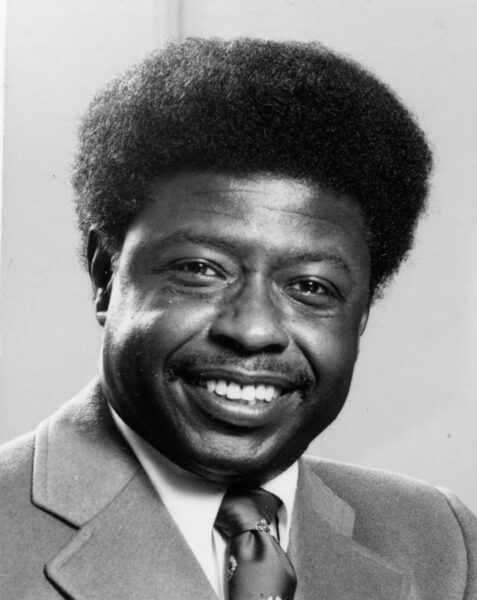
Courtesy Michigan State University Archives and Historical Collections
As historians, we typically put an individual’s birth and death dates after their name. With Leslie Brennan Rout Jr., this is not as easily done. Rout grew up in the housing projects of south Chicago. To meet welfare requirements for benefits, he had to claim that he was younger than he was. This has led to confusion as to Rout’s age, but he stated that he was born in 1935. Rout never forgot his upbringing; for example, often the only thing his family had to eat was cereal, so he refused to eat it in adulthood.
What saved Rout was his intelligence and drive. But one school stood out for him. His office at Michigan State University (MSU) had no indications of where he went to college, but a large sticker on the door touted St. Ignatius High School in Chicago. The rigor and discipline learned there stayed with Rout his whole life. Rout went on to earn his bachelor’s and master’s degrees from Loyola University Chicago and his PhD in history from the University of Minnesota. He joined the MSU faculty in 1968.
An accomplished jazz musician, Rout toured Latin America for the Department of State playing saxophone with the Paul Winter Sextet, which helped pay for graduate school and which confirmed his decision to pursue Latin American studies. Upon his return, he performed with musicians such as Lionel Hampton and Woody Herman. Later in his career, Rout wrote articles on jazz and started his own small band at MSU.
Rout was a consummate historian. He excelled at drawing disparate events from his encyclopedic memory and bringing them together in a cogent analysis. He saw world history as a battle for position in which having the most money or the biggest guns and the willingness to use them was paramount to understanding the world. His first two publications were Politics of the Chaco Peace Conference, 1935–39 (1970) and Which Way Out? A Study of the Guyana-Venezuela Boundary Dispute (1971), which both dealt with power, politics, money, and military capability. Though Rout felt less comfortable delving into social history, nevertheless, as a Black man, he was drawn into Black history. One reason he decided to publish in the area was that he always resented, from personal experience, those who claimed that Latin America was a racial paradise. Indeed, he started on a book examining race relations in Brazil, only to have his effort eclipsed by Carl N. Degler’s award-winning Neither Black nor White. Rout agreed with Degler’s analysis and abandoned his Brazil project, instead writing The African Experience in Spanish America, 1502 to the Present Day (1976).
Among the opportunities that Rout garnered during his career was a lengthy stay with the Woodrow Wilson Foundation. The newly released papers dealing with World War II led us to co-author The Shadow War: German Espionage and United States Counterespionage in Latin America during World War II (1986), which won the National Intelligence Study Center’s Best Book Award. In writing the work, we learned of the information about Pearl Harbor that Serbian spy Duško Popov received from the Germans via microdot before December 1941, and that J. Edgar Hoover did not share this information with the president or intelligence services. The American Historical Review published the finding as a research note, and newspapers and television publicized the discovery.
Rout was a superb teacher, as evidenced by his prestigious Teacher-Scholar Award from MSU. He was very rigorous. Writing had to be clear and lucid, and any research had to be complete. For graduate students, he required papers to be of publishable quality and that students include in the heading on each assignment the journal to which it would be submitted.
When his students get together, they can fill an evening telling Les Rout stories. He was unique, and while many found him difficult, it was a joy to learn from him. He died in 1987 of complications from hepatitis. Those who knew Leslie B. Rout Jr. still miss him, and I suspect always will.
John F. Bratzel
Michigan State University (emeritus)
This work is licensed under a Creative Commons Attribution-NonCommercial-NoDerivatives 4.0 International License. Attribution must provide author name, article title, Perspectives on History, date of publication, and a link to this page. This license applies only to the article, not to text or images used here by permission.